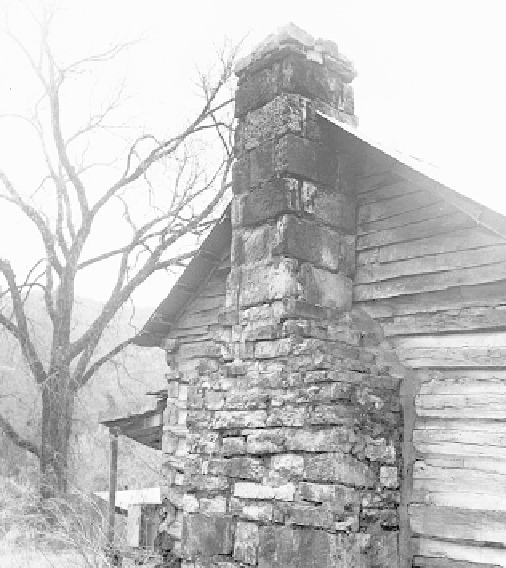Civil Engineering Reference
In-Depth Information
CHAPTER THIRTEEN
i refuse to build a log house
without a
stone fireplace.
At best they are the poorest of heat sources, but
that's hardly the point. A log house looks somehow
naked without a chimney, whether of mud and sticks,
brick, or stone, and the room inside the basic cabin
just sort of radiates from the hearth.
Early on, of course, the women cooked at the fire-
place, hanging pots from a crane or iron bar across it.
As the wood cookstove appeared in the hills and was
(usually) installed in the lean-to, the fireplace didn't
have to go all year long. And when the cast-iron heater
came, there were log houses built with no fireplaces.
The Fireplace Mystique
I suppose the mystique goes back to our very early use
of fire as protection at the cave mouth. Certainly the
open fire has historically been a source of cheer as well
as warmth. And, of course, the flames were often the
principal light source for the settlers, along with their
bear fat and bayberry candles.
Until recently, not much had been done to make a
fireplace heat well, and little is done even now. Basi-
cally you have a fire in an opening in the wall with a
sloped back to reflect some heat, and a narrow chim-
ney throat opening to a wider bell over a smoke shelf
to foil downdrafts. Maybe there's some firebrick as lin-
ing, or even a metal box inside, and a damper.
The dual-wall heat box in wide use now simply
draws cold air from below, heats it, and allows the
smokeless air to circulate behind the firebox and
The chimney on the Beaver Jim Villines cabin at Ponca, Arkansas,
before restoration. This is drystone work, using the excellent local
sandstone.
either convect naturally or be blown out into the room.
That helps a lot, but it tends to rust out in a few years.
But still, in order for the fire to burn, large quanti-
ties of air must come from somewhere to feed the
flames and then go on up the chimney to be wasted.
This air has always come through cracks around win-
dows, doors, chinking, between shingles, and up
through open places in the floor. Eliminating these air
sources would make it just about impossible to get a
fire going.





